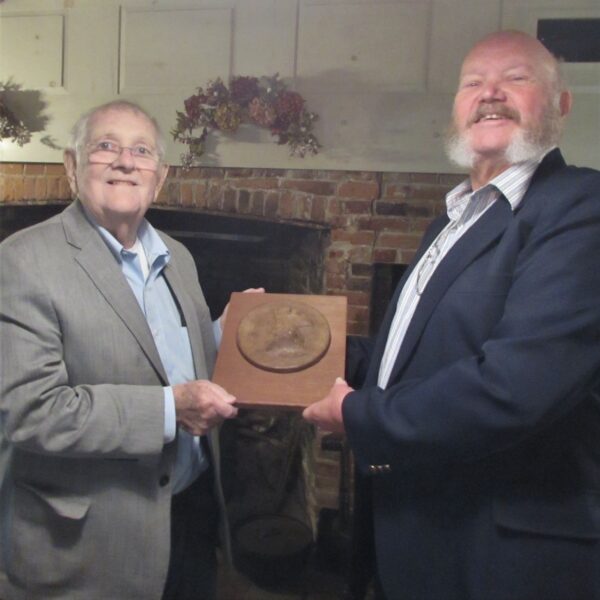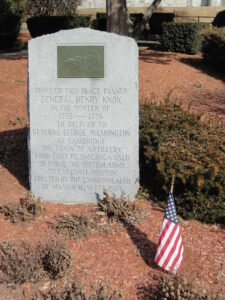
MARLBOROUGH – Enthusiasm for experiencing the Marlborough area’s history often peaks with re-enactment events.
When Bob Harrison still resided in Marlborough, he was active in the Sudbury Companies of Militia and Minutemen and participated in encampments and other re-enactments, as well as in social gatherings with his neighbors Samuel and Mabel Field, both artists. Recently Harrison and his wife made a trip to visit Marlborough, delivering a unique object to the Peter Rice Homestead.
Rarely did Samuel Field sculpt, but he hoped to create a mold to make pins for Knox Trail re-enactors.
He studied the realistic bas reliefs of Raymond Porter and Cyrus Dallin, well-known bronze sculptors. Then he attempted carving clay, slightly raising three dimensional forms from the background to craft a portrait of an older Gen. Henry Knox, famous for his transport of captured artillery cannons to Boston in 1776. Mounted on wood, the finished profile was proudly given by his widow Mabel to Harrison.
Displayed for years in the Harrisons’ Maine home, the portrait returned to its origin of creation this fall. It was donated to the Marlborough Historical Society.
One of the largest re-enactment programs that has intrigued many is the Henry Knox Trail Re-enactment during the harsh winter of 1975-76. Living history interpreters voluntarily traced the path Gen. Knox traveled in the winter of 1775-76 from Fort Ticonderoga, N.Y. to Continental camps on Cambridge Common with 59 captured cannons.

When George Washington was still a general, he assigned the 25-year-old Boston bookseller the task of stealthily transporting the captured artillery to Cambridge. Specializing in military histories, Knox was made a general. It was the turning point in the Revolutionary War, as the British evacuated their ships from Boston harbor when they saw the array of cannons pointed their way from Dorchester Heights.
Dressed in colonial clothing, the re-enactors faced ice storms, slush, and blizzards as they diligently hauled wagons of hay, blankets, oxen, horses, and artillery through New York and Massachusetts, including the hills of Marlborough. Only eight teams of horses were used instead of the 200 used by Knox. The original caravan carried 60 tons of artillery on some 83 sleds, but there was a lot less weight than this while traipsing by Mammoth Mart on Boston Post Road in Marlborough in 1976, according to spectators.
The modern-day expedition was also made easier by the 1926-27 installation of 56 granite markers indicating the historic trail to follow. In Marlborough, the General Henry Knox marker still stands in picturesque Bartlett Park, at the corner of Prospect and Main Streets.
The Knox Trail Re-enactment was an important part of America’s bicentennial celebration in 1976. Plans are underway to repeat the extraordinary Knox trek in honor of its 250th anniversary in 2026.











